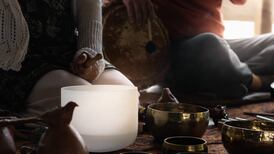Launt Thompson left Ireland for the United States as a teenager during the Famine. He learned how to sculpt and rose to become one of America’s most sought-after sculptors. However, after achieving fortune and fame in his adopted homeland, he died penniless and alone.
Lancelot (Launt) Thompson was born in Abbeyleix, Co Laois in 1833. He travelled in Albany, capital of the state of New York, with his widowed mother in 1847.
Thompson became an office assistant to a professor of anatomy at the Albany Medical College. It was said that he was “constantly drawing and sketching on every blank piece of paper he found”.
When the professor showed some of Thompson’s drawings of bones and muscles to the sculptor Erastus Dow Palmer, Thompson was taken on as Palmer’s studio apprentice. The self-taught Palmer had made a name for himself by creating cemetery monuments and portrait busts of some of the prominent citizens of Albany.
Thompson remained in Palmer’s studio for nine years and during that time, he produced several bust portraits and a relief of Dickens’s character Little Nell.
He moved to New York City in 1858 at age 25. There, he established his own studio, made medallion portraits, cut cameos and enrolled in life classes at the National Academy of Design. After displaying some of his work at the academy’s annual exhibition of 1859, he became an associate member. Three years later, he was elected an academician on account of his bust entitled Rocky Mountain Trapper.
Thompson was getting noticed in the art world and great things were expected of him. An article in the New York Herald from December 1865 said, “Launt Thompson’s genius gives promise of a future that will leave him without a living superior in sculpture”.
His first large sculpture was a bronze statue of Napoleon I. It was completed in 1866 and at the time, it was said that it was “beautifully harmonious, wonderfully individual – a real creation, a triumph in art”. It was exhibited in Paris in 1867 at the Exposition Universelle.
Since then, it has been displayed in the Metropolitan Museum of Art in New York and the Smithsonian Institute in Washington, DC.
Thompson had a likeable personality and made friends easily. He was well connected with wealthy New Yorkers, including the Astors as well as creative types, such as the actor, Edwin Booth. For a time, William Waldorf Astor was a pupil of Thompson’s. Astor then became one of his patrons, helping Thompson to become accepted into society.
In the wake of the American civil war, a raft of public monuments were commissioned to remember the dead.
At that time, Thompson was one of the most sought-after sculptors in America. He created the civil war memorial entitled The Color Bearer in Pittsfield, Massachusetts, and a statue of Gen John Sedgwick at West Point Military Academy.
He was commissioned by the US Congress to make statues of Admiral Francis Du Pont and Gen Winfield Scott, but perhaps the most impressive was the equestrian statue of Gen Ambrose Burnside in Providence, Rhode Island. It is enormous – the granite pedestal is 16 feet high, the statue is nine feet tall and it cost a staggering $30,000, a fortune at the time.
Thompson was at the height of his creative powers and popularity in the 1870s.
He was elected vice-president of the National Academy of Design (1872-1873) and was awarded an honorary degree by Yale University in 1874.
Thompson lived in Europe for two extended periods, from 1868 to 1869 and from 1875 to 1881.
He spent some time in Paris, but most of the time was spent in Italy, living in Rome and Florence. While in Italy, he could study classical statues up close, and had easy access to valuable raw materials at a fraction of what they would cost in America, and talented workmen. He was able to execute commissions that he had received from America.
When he returned to New York in 1881, his wife, Maria Louisa Potter, remained in Florence with their three children. She died there in 1916.
It seems that it was while in Italy that his behaviour started to become erratic and his drinking became problematic.
Once back in New York, he quarrelled with friends and was ejected from some of his gentleman’s clubs.
In spite of these difficulties, he continued to work and get commissions. However, as his mental state became increasingly less stable, he spent time in a private sanatorium and was later placed in the State Homeopathic Asylum for the Insane at Middletown, New York. He died there in September 1894 at the age of 61.
“Poor Launt Thompson”, read one newspaper obituary, which said, “a career begun in success and high friendships darkening into penury and oblivion”.
No mourners attended his funeral.
A truly sad end to such a bright story of artistic triumph.














